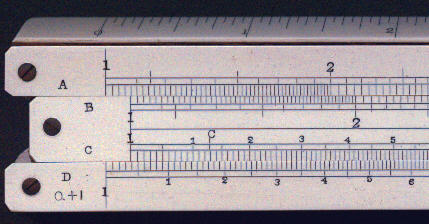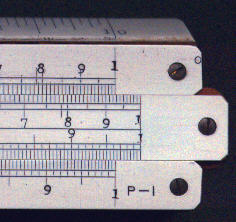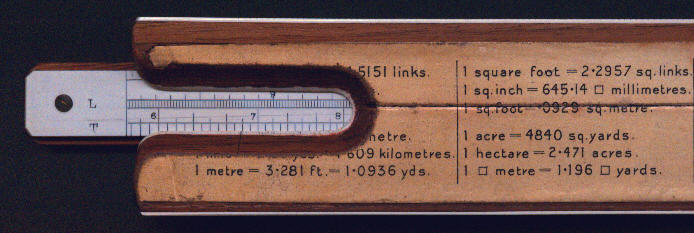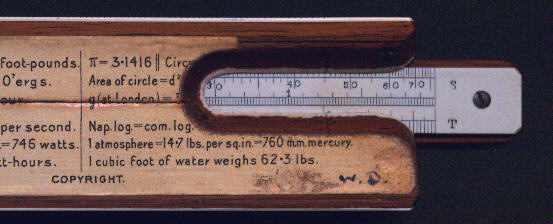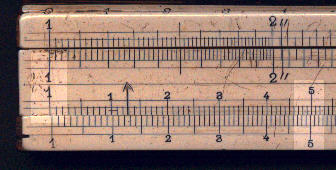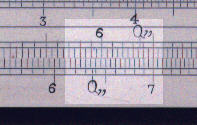1. This rule is, to me, a complete mystery. It has absolutely no
indication of the manufacturer. It also came without a cursor which might have given
additional clues.
2. At a guess I would say it was made around 1920 - give or take a few decades.
3. The rule has tables of conversion factors stuck on the back which was designed for the
British market. Many of the factors are conversions between British units (e.g. mile per
hour to feet per second). The conversion rate for pints to litres shows it was not for the
US market. The conversion rate for horse power to watts uses the British rather than the
continental rate (i.e. 746 rather than 736). On the other hand the table does not fit the
rule at all well and where windows are cut out for the trig and log scales on the back of
the slide the tables were also cut away.
4. The rule has a gauge point at 6366, marked Q" , which is related to a
French unit angular measurement whereby a circle is divided into 100 grads each of which
sub-divided 100 times (400 * 100 / (2p) = 6366.2) This
mark is very uncommon on rules not made in France.
5. The general layout of the rule has similarities to a late 19th century Tavernier Gravet
that I own. Comparing the detail of the front left of this mystery rule with the detail of
the Tavernier Gravet rule we can see:
- the right hand side of the number ones align with the line marking the left
hand end of the scale,
- a horizontal line separates the B and C scales,
- a different typography is used for the 5 of 1.5 compared to the other
numbers (though in one case it is higher and in another case it is lower).
6. The box consists of dark green cloth covered cardboard which is closed by the press
stud. This is very similar to early Hemmi rules. My first thought was that whilst Hemmi
were known to have produced some rules which were similar to Faber Castell rules from
Germany, perhaps they had also produced some of their early rules to a French pattern.
However the two parts of the press stud had patent numbers on; one of which was illegible
the other of which was 16228. Before 1916, a fresh series of numbers was used each year,
from 1916 onward they started with 100 000. This is useful in two ways. It means the case
was almost certainly British and it dates it to around 1930 at the latest.
6. My guess is that the rule was made by Tavernier Gravet, or maybe another French firm,
for a British company.
7. Any information or ideas would be welcome.

